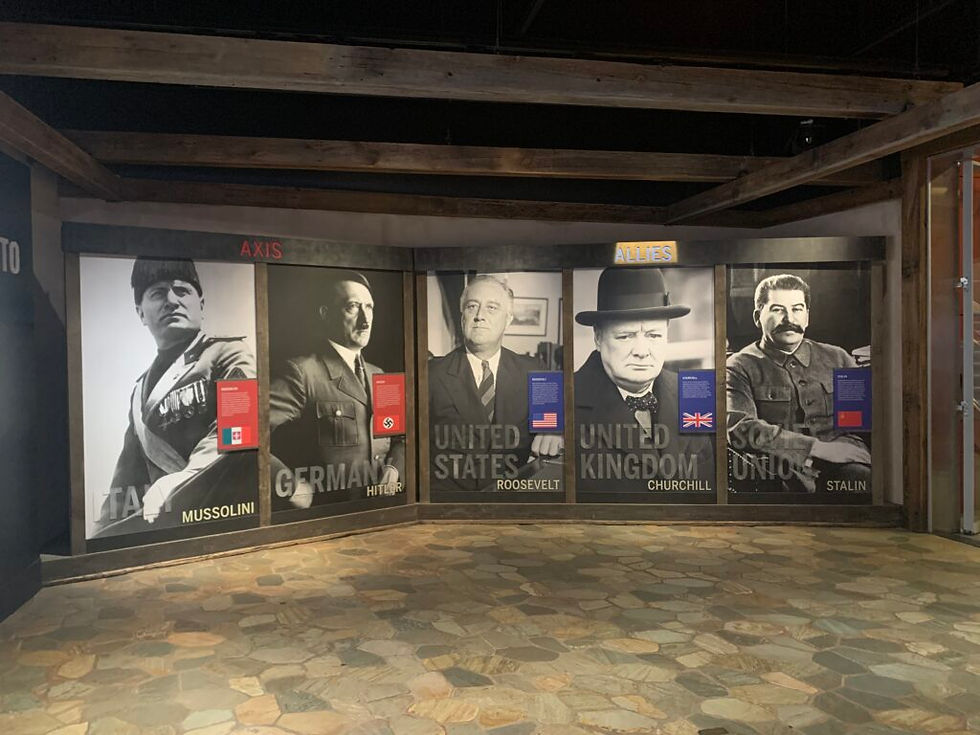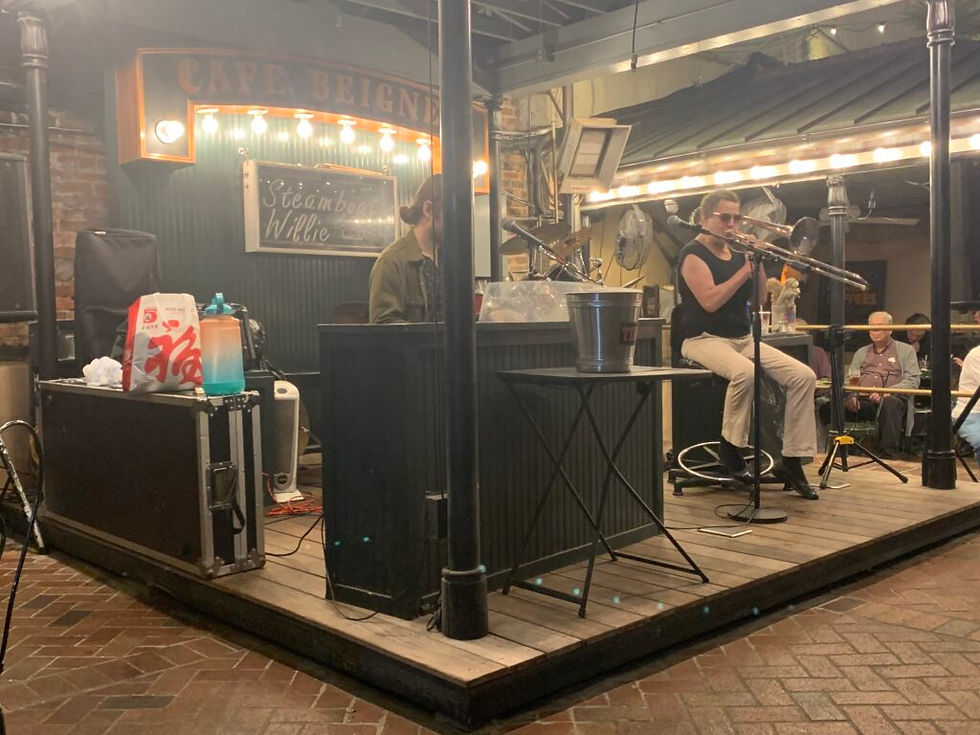New Orleans (Nov 14-17, 2023)
- Stephanie
- Nov 17, 2023
- 4 min read
Updated: Jul 6, 2024
Neither of us had ever been to New Orleans, but we knew we didn't want to visit during Mardi Gras and the crowds, or in the heat and humidity of the summer, so mid-November seemed like the perfect opportunity. (See PLANNING TO TRAVEL for tips on companion pass with #SouthwestAirlines).

Plus, in addition to big adventures traveling the globe, we have a bucket list of places to visit when time permits. New Orleans was one of these. Neither of us had been and we wanted to see what it was all about. But we didn’t want heat, humidity or crowds, so mid-November seemed like the perfect time! We were greeted with a jazz ensemble at the airport – not sure if that’s normal, but it was a pleasant surprise.

We arrived in rain - what I call “wet diaper weather” - where the sky is gray and looks like wet cotton, and the air is heavy with moisture. It’s what it’s like in MN (where I lived for 21 years), except MN is much colder, from early November until late March. Not much fun for walking around, but we wandered a bit, found some food and headed to our hotel.

NATIONAL WORLD WAR II MUSEUM (nationalww2museum.org)
The next day we spent 8 hours (9am-5pm) walking around the National WWII Museum. We covered maybe 75% of the buildings, but were definitely rushed the last few hours and didn’t watch, read or understand most of what we blew by.

This museum is an AMAZING, must-see experience, and worth every penny. They curators brought together the best historians, cinematographers, art directors, actors, researchers, artists, graphic designers, engineers, restorers, stagers, and many others to create a fully interactive experience that “tells the story of the American experience in a war that changed the world - why it was fought, how it was won, and what it means today - so that all generations will understand the price of freedom and be inspired by what they learn.”
Having spent three months learning about WWII from a European perspective during our first adventure traveling throughout Europe last summer and fall, this visit tied the pieces together and added the critical US perspective.


Why is the National WWII Museum located in New Orleans you might ask, as I did? Because it’s the home of Higgins Industries, responsible for manufacturing and testing over 20,000 LCVP (boats) that brought soldiers to shore in every major amphibious assault in the war. These boats were why we were able to land at Normandy, which changed the trajectory of WWII.
The museum visit helped me understand why some Americans see the US as the protector of democracy, why we so often defend vulnerable nations or regions against aggressors, why we spend so much money funding our military and much more. I still may not always support these decisions, but I now know that in the late 1930s, as Japan invaded China and Germany built the largest military in the world, the US had a military presence ranked 18th in the world, behind countries like Bulgaria and Romania.
While the US practiced isolationism and professed nationalism, Japan and Germany elected tyrannical dictators seeking to expand their sphere of control and purge the world of people they deemed unworthy of life. If Japan had not bombed Pearl Harbor in December 1941, forcing President Eisenhower to declare war, I might have been writing this in Japanese or German.

What scares me, is that history tends to repeat itself, especially when we don’t heed its lessons. Do yourself a favor, if you’re not already educated about WWII, take the time to learn.



It was still wet and chilly when we left the museum, but there were sights to see. Such interesting architecture downtown. A building meant to look like a lighthouse, once home to an organization seeking to help the blind. A lighted cupola on top of a building and a marching band. After such a long day, we enjoyed a fabulous meal at Sofia NOLA, a restaurant partly-owned by a local Denver restaurant group we know, and headed back to sleep.
ALGIERS POINT

Another dreary sky the next morning did not stop us from checking out the river front, multiple river boats, steam boats and crossing the Mississippi to the Historic Algiers neighborhood on its West Bank. It’s the second oldest neighborhood in New Orleans, first settled in 1719, and home to multiple families dating back four and five generations. Although it’s so close to the hustle and bustle of New Orleans, this laid-back community is its own little village with cute pubs, art galleries and quaint cottages.
The Lafeyette Cemetery was reminiscent of our visit to Paris’s Cimetiere du Pere-Lachaise, where each tomb or mausoleum is larger and more ornate than the next. It truly is a beautiful neighborhood with a deep South, plantation-era feel. I loved that notable or famous homes often boasted a plaque sharing their history.









GARDEN DISTRICT
Returning to the New Orleans side of the river, we checked out the famous and charming Garden District, filled with grand historic mansions, cute cottages and the sumptuous gardens of St. Charles Avenue, on the Mardi Gras parade route.








FRENCH QUARTER
We spent the night wandering the French Quarter, where music is on every corner, in every café and pub, and street performers draw crowds. We popped into famous establishments and absorbed the feel of the town. The next day we revisited the French Quarter during daylight hours. A very different vibe, still lots of music, and still fun.













MORE SIGHTS





We spent an afternoon hanging out at Café Beignet listening to music and enjoying their famous namesakes. We had some fun taking pictures around their Musical Legends Park.





On our last day, we checked out Congo Square and other landmark parks attesting to the city’s vibrancy and rich history, the many contributions made by its citizens and the on-going legacy it provides. It was a brief trip, but we enjoyed learning so much more about its history, culture and significance to music, food, and southern hospitality.



Comments